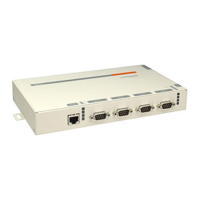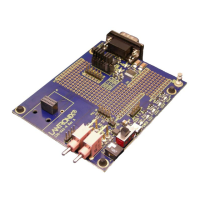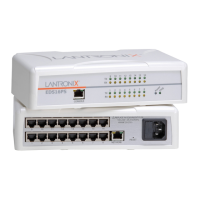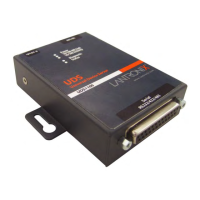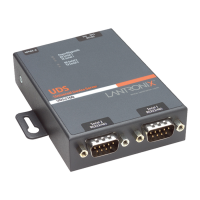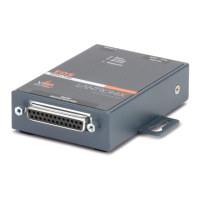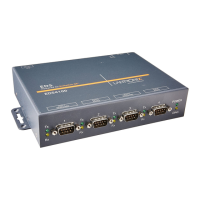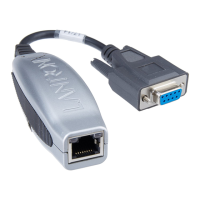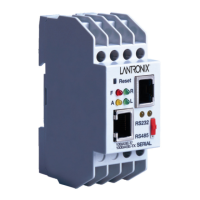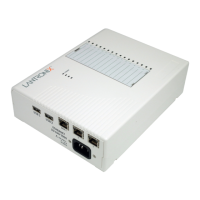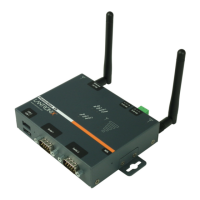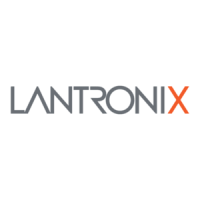Serial Channel (Port) Configuration Configuration
7-10
Manual Connection
If manual connection startupis configured (C +address/port), onlythe portionnotprovided
in the command string is used. In manual mode, the last byte of the address must be
provided.
For example, if the Device Server’s configured remote IP address is 129.1.2.3 and the TCP
port number is 1234:
Autostart (Automatic Connection)
For the serial port, automatic TCP connection to a network node can be configured by
setting the remote IP address and the TCP port number parameters. If automatic connection
is selected, all parameters must be provided.
Datagram Type
When selecting this option, you will be prompted for the Datagram type. Enter 01 for
directed UDP.
Modem (Emulation) Mode
In Modem Mode, the Device Server presents a modem interface to the attached serial
device. It accepts AT-style modem commands, and handles the modem signals correctly.
Normally there is a modem connected to a local PC and a modem connected to a remote
machine. A user must dial from the local PC to the remote machine, accumulating phone
charges for each connection. Modem Mode allows you to replace modems with Device
Servers,and to use an Ethernet connection instead of a phonecall, withouthaving to change
communications applications and make potentially expensive phone calls.
Note: If the Device Server is in Modem Mode and the serial port is idle, the
Device Server can still accept network TCP connections to the serial
port if Connect Mode is set to C6 (no echo) or D6 (echo).
Modem Mode is selected by setting the connect mode to 06 (no echo) or 16 (echo).
In Modem Mode, echo refers to the echo of all of the characters entered in command mode;
it does not mean to echo data that is transferred.Quiet mode (no echo) refers to the modem
not sending an answer to the commands received.
Table 7-5: Manual Connection Address Example
Command String Result
C121.2.4.5/1 Complete override; connection is started with host
121.2.4.5, port
1
C5 Connect to 129.1.2.5, port 1234
C28.10/12 Connect to 129.1.28.10, port 12
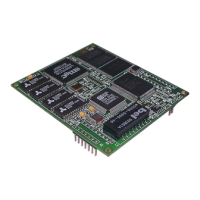
